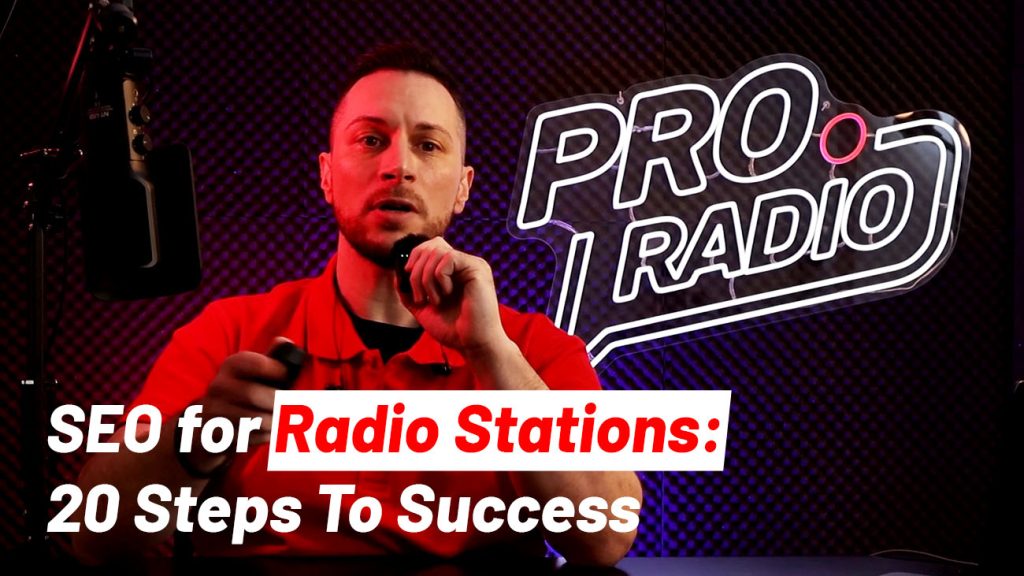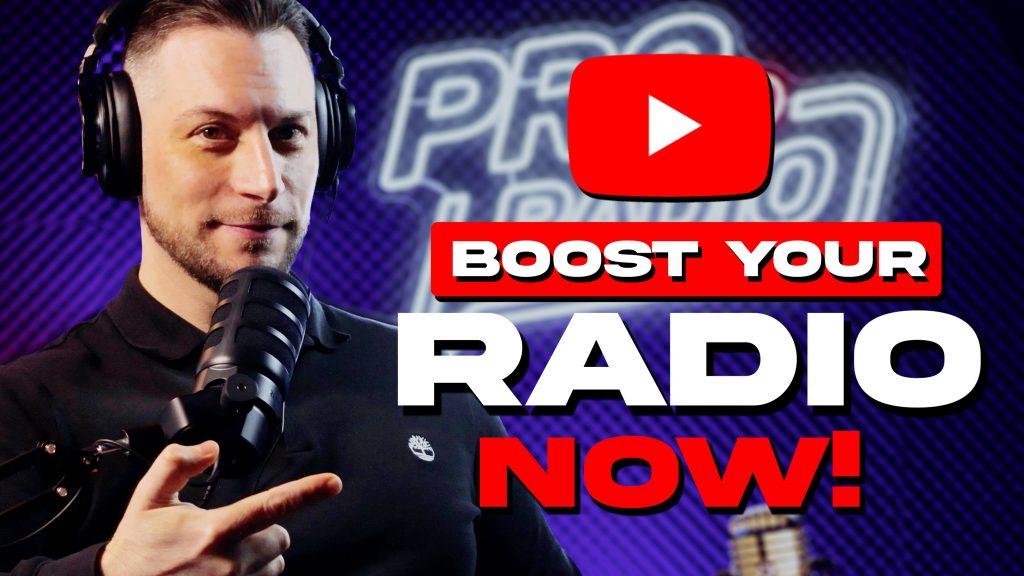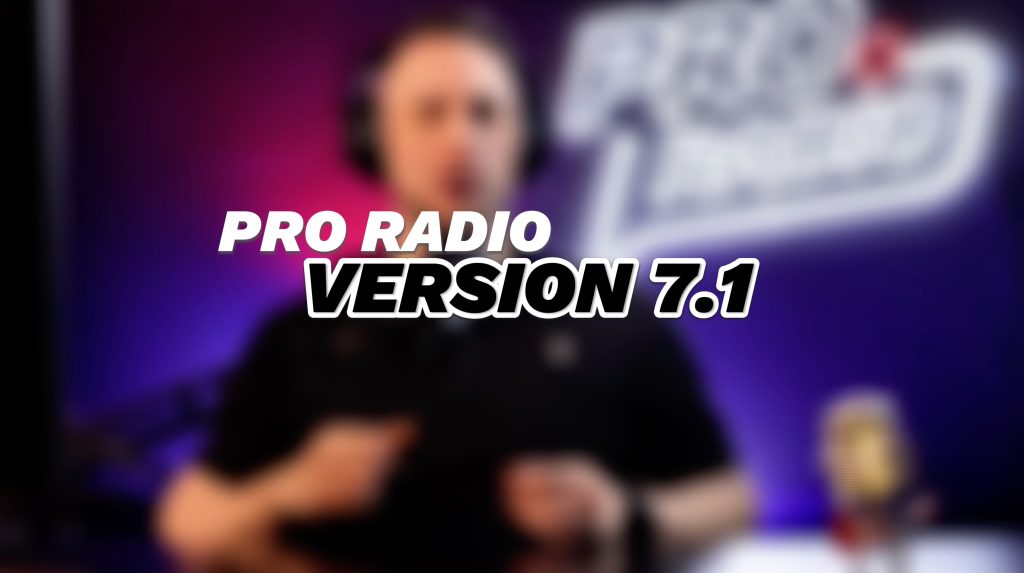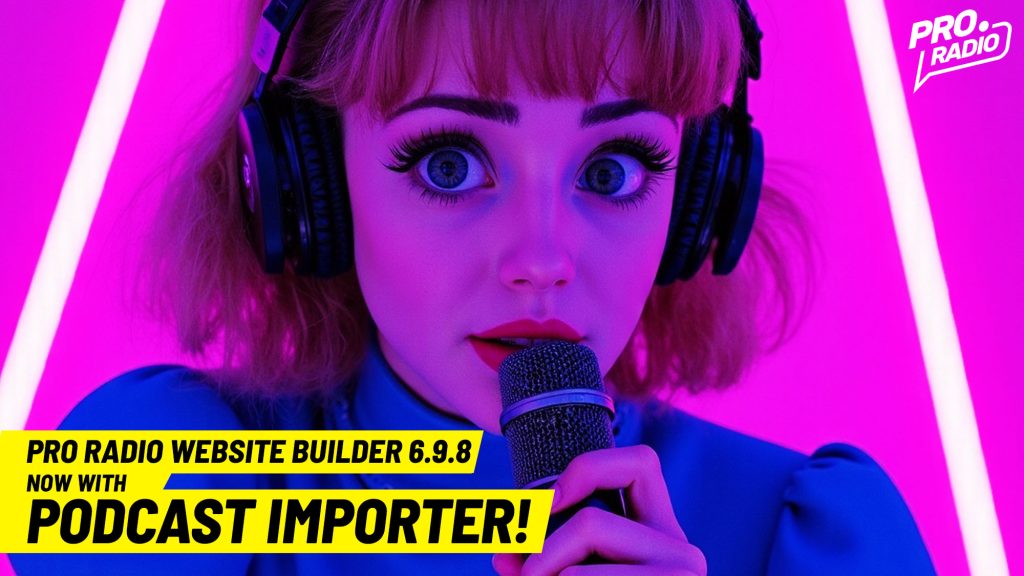Hello dear radio lovers and welcome to our new video! We are about to share with you a solid, simple, and effective SEO strategy that is crucial for any new radio station.
So, you’ve got your new radio station, but now, how to get visitors? Your next step is to boost your radio website visibility, and to do so, just follow those simple steps, and the results are guaranteed!
SEO and Radio websites: a simple strategy
If you’ve followed our previous tutorials, you may already know that branding is very important. This involves having a unique, short, memorable name for your radio, along with a good logo and a solid color palette to be used across your graphics, website, social media, and printed materials. However, that alone is not enough to attract visits and grow an audience.
Our strategy involves 4 crucial aspects:
- Keyword research
- Contents
- Socials
- Backlinks
Overview on our SEO and SEM strategy for radio station websites
For a radio station, SEO is pretty organic since people have an informational or entertainment intent. That’s very different than the SEO for a shop, where people need to purchase something.
This means most people will enter your radio website by searching some related topic, such as artist names, event names, venues in your city, and similar. Then, they stumble upon your radio and decide if they want to stay for more.
So, it’s important to not think about your radio SEO as if it’s a shop but rather as if it’s a magazine or an amusement park, where you go for one specific reason and then meet more contents for your specific taste. Plus, for a radio, it’s easier to generate backlinks because you can rely heavily on social medias. Being an entertainment type of content, your website posts are more likely to be shared and appreciated on Facebook and X than any other commercial website.
That’s why it’s WAY easier to grow traffic and listeners from social networks and use them for backlink building.
And this can be achieved by publishing interesting content on your site relevant to specific artists and events of your niche and spreading it on FB, X.com, and IG, tagging artists, and growing a stable fanbase interested in your very specific category of contents.
This is basically free and takes just some work.
This will also get your site indexed for many less competitive keywords, such as new artists of that style, venues, event names, and more, because they’re in your blog news, and by sharing them on the socials, you’ll tell Google about your page and create so-called “social signals”.
Having your radio indexed only for your radio may lead to a very limited outcome compared to working on a broader list of keywords, which will get you more potential listeners who would have never thought about searching for your radio name because they simply don’t know it.
Instead, creating a growing volume of interesting, unique contents, sharing it, and having it indexed on Google will slowly build backlinks, fanbase, and attract new listeners for new keywords over time.
Keyword Research
About the keywords in the specifics, you should consider making some research.
To do so, first of all, start with a tool like SemRush, Moz.com, or similar. You can make a free account to perform about 10 searches a week. If you really are serious about your radio, consider making a pro account, since a hundred bucks will lead to an infinitely greater amount of return because of the quality results you can get from those tools in terms of keyword quality and quantity.
Use the keyword tool and find lists of keywords relative to your potential niche of listeners. Start with the most generic keywords, and the tool will find for you hundreds of juicy alternatives, with related difficulty index and traffic volume.
For instance, enter “Country music radio” or “country radio” and see which are other related interesting keywords. This will be your starting point for your SEO strategy.
Practical Steps
Let’s now get into the practical part:
- Generate a keyword list of at least 15 to 20 keywords semantically related to your main keyword.
- Make sure to have one page for each keyword, with at least 400 words of text inside (speak about your radio, artists, shows, events, whatever). Title, description, and texts have to contain your main keyword of each page.
- Make sure to upload a few pictures named as the keyword, with ALT tag for each picture.
- Once you have at least 15 or 20 of those pages, make sure to link them properly from your homepage and menu, and make them interesting for the users. Each one needs unique content, and NO CHAT-GPT!
- Then, install AIOSEO, make sure to set your homepage title and keywords (for your home, you can use “radio name – top keyword”) and generate a sitemap.
- Register your site on analytics and Google Search Console.
- Submit the sitemap to Google Search Console.
- Monitor the indexing over the next days, making sure your pages are indexed.
- Ignore performance score and similar; they’re worthless if the contents are not there: it’s like fixing the paint of a car without an engine!
- Then, curate the blog area. Make sure to post at least 1 good article a day. Parties, artists, music charts, whatever, interviews, personal thoughts, just make them relevant for your pack of keywords.
- In the article, make sure to include one or 2 of your primary keywords selected at the beginning on SEMRUSH, and link those keywords to the respective page.
- Make the articles unique, at least 300-500 words.
- Include at least 1 or 2 pictures, which must have a relevant file name and alt tag for the keywords you need.
- With each article, introduce less competitive yet important keywords. For instance, for a country radio, you could write a post as including “geographically related” keywords as “Salt Lake City December 2023 best country events” and include “Salt Lake City” and “country events” as keywords in your titles. This will make your site rank for less competitive keywords, speed up indexing, and start attracting visitors.
- Make sure your featured image is of good quality. Possibly, with Photoshop, Gimp, or similar, write the title on the picture. You can get quality images from Freepik.com or Unsplash, avoiding copyright issues.
- Spread the word: make sure to post them on your Facebook, X.com, Pinterest, and Linkedin.
- Contact directly local artists, venues, shops, and other authorities related to your articles, let them know you’re promoting them: they will help you with more backlinks!
- If your content is good and interesting, consider sharing it on Facebook groups, since other members will love them.
- Repeat every day: continue writing and posting relevant content every day and you’ll see results within the first 2 weeks. But don’t stop!
- Use Google Analytics to monitor your success, and use those valuable insights to extend your keywords list day by day.
This will cost you 1 or 2 full days of work at the beginning, and about 1 hour a day every day.
This is a proven strategy, and with the required dedication is guaranteed to bring traffic and grow your global audience.
The key points are: creativity, writing good contents, and putting effort into sharing it!
Nowadays, for a radio station, the audio is not all, but the internet and visual parts that are nowadays required to grow a successful radio are not a bad thing: now every new radio, even without a budget, can start from nothing and quickly grow to reach an incredibly broad audience.
I hope this guide will help you and your radio reaching more and more listeners every day!
Thank you for reading it, and remember, if you want to create a radio station website which is SEO-ready, beautiful, and functional, Pro Radio WordPress Theme is the answer. Make sure to check it out, on Pro.Radio.







